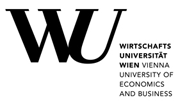Department of Economics Working Papers,
Vienna University of Economics and Business, Department of Economics
No 267: The impact of Brexit on trade patterns and industry location: a NEG analysis
Pasquale Commendatore (), Ingrid Kubin () and Iryna Sushko ()
Additional contact information
Pasquale Commendatore: University of Naples ‘Federico II’
Ingrid Kubin: Department of Economics, Vienna University of Economics and Business
Iryna Sushko: Institute of Mathematics, NASU, and Kyiv School of Economics
Abstract: We explore the effects of Brexit on trade patterns and on the spatial distribution of industry between the United Kingdom and the European Union and within the EU. Our study adopts a new economic geography (NEG) perspective developing a linear model with three regions, the UK and two separated regions composing the EU. The 3-region framework and linear demands allow for different trade patterns. Two possible ante-Brexit situations are possible, depending on the interplay between local market size, local competition and trade costs: industrial agglomeration or dispersion. Considering a soft and a hard Brexit scenario, the ante-Brexit situation is altered substantially, depending on which scenario prevails. UK firms could move to the larger EU market, even in the peripheral region, reacting to the higher trade barriers, relocation representing a substitute for trade. Alternatively, some EU firms could move in the more isolated UK market finding shelter from the competition inside the EU. We also consider the post-Brexit scenario of deeper EU integration, leading to a weakening of trade links between the EU and the UK. Our analysis also reveals a highly complex bifurcation sequence leading to many instances of multistability, intricate basins of attraction and cyclical and chaotic dynamics.
JEL-codes: C61; C63; F41 August 2018
Note: PDF Document
Full text files
WP267.pdf
Report problems with accessing this service to Sune Karlsson ().
RePEc:wiw:wiwwuw:wuwp267This page generated on 2025-09-20 04:36:36.

